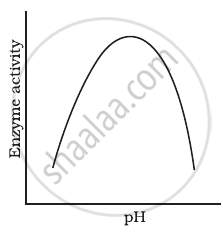Advertisements
Advertisements
प्रश्न
Nucleic acids exhibit secondary structure. Describe through Wetson- Crick Model.
उत्तर
Nucleic acids exhibit a wide variety of secondary structures. For example, one of the secondary structures exhibited by DNA is the famous Watson- Crick model. This model says that DNA exists as a double helix. The two strands of polynucleotides are antiparallel, i.e. run in the opposite direction. The backbone is formed by the sugar-phosphate-sugar chain. The nitrogen bases are projected more or less perpendicular to this backbone but face inside. A and G of one strand compulsorily base pairs with T and C, respectively, on the other strand. There are two hydrogen bonds between A and T and three hydrogen bonds between G and C. Each strand appears like a helical staircase. Each step of the ascent is represented by a pair of bases. At each step of ascent, the strand turns 36°. One full turn of the helical strand would involve ten steps or ten base pairs. Attempt drawing a line diagram. The pitch would be 34 A. The rise per base pair would be 3.4 A. This form of DNA with the above-mentioned salient features is called B-DNA.

Diagram indicating the secondary structure of DNA
APPEARS IN
संबंधित प्रश्न
Illustrate a glycosidic, peptide and a phospho-diester bond.
Identify the substances having glycosidic bond and peptide bond, respectively in their structure:
Number of hydrogen bonds formed between guanine and cytosine is:
A unit composed of sugar and nitrogen base linked by glycosidic bond is ______.
Ester linkages occur in ______.
Select an appropriate chemical bond among ester bond, glycosidic bond, peptide bond and hydrogen bond and write against the following.
Polysaccharide ______
Select an appropriate chemical bond among ester bond, glycosidic bond, peptide bond and hydrogen bond and write against the following.
Fat ______
Select an appropriate chemical bond among ester bond, glycosidic bond, peptide bond and hydrogen bond and write against the following.
Water ______
Enzymes are proteins. Proteins are long chains of aminoacids linked to each other by peptide bonds. Aminoacids have many functional groups in their structure. These functional groups are, many of them at least, ionisable. As they are weak acids and bases in chemical nature, this ionization is influenced by pH of the solution. For many enzymes, activity is influenced by surrounding pH. This is depicted in the curve below, explain briefly.

Nucleic acids exhibit secondary structure, justify with example.
